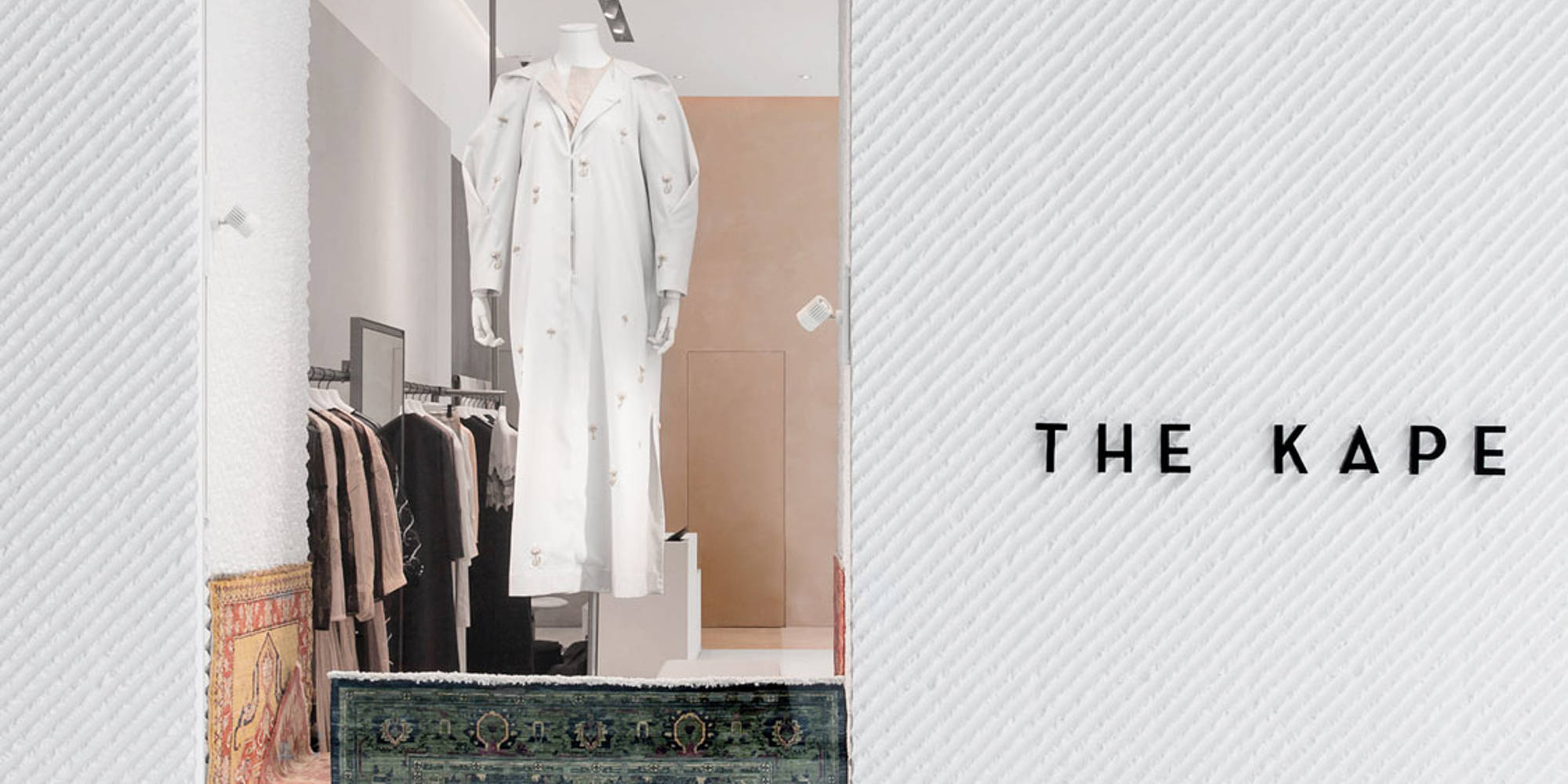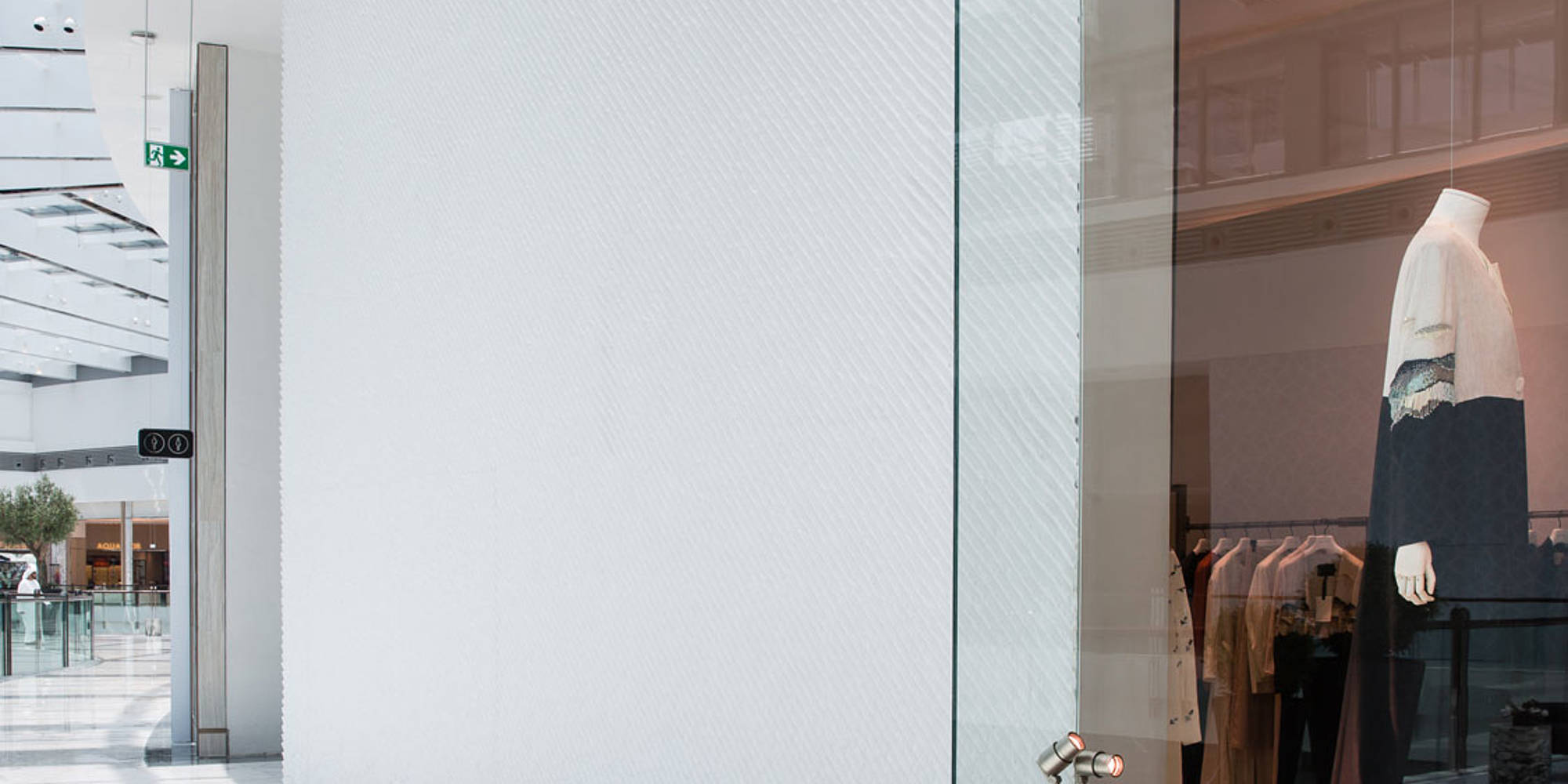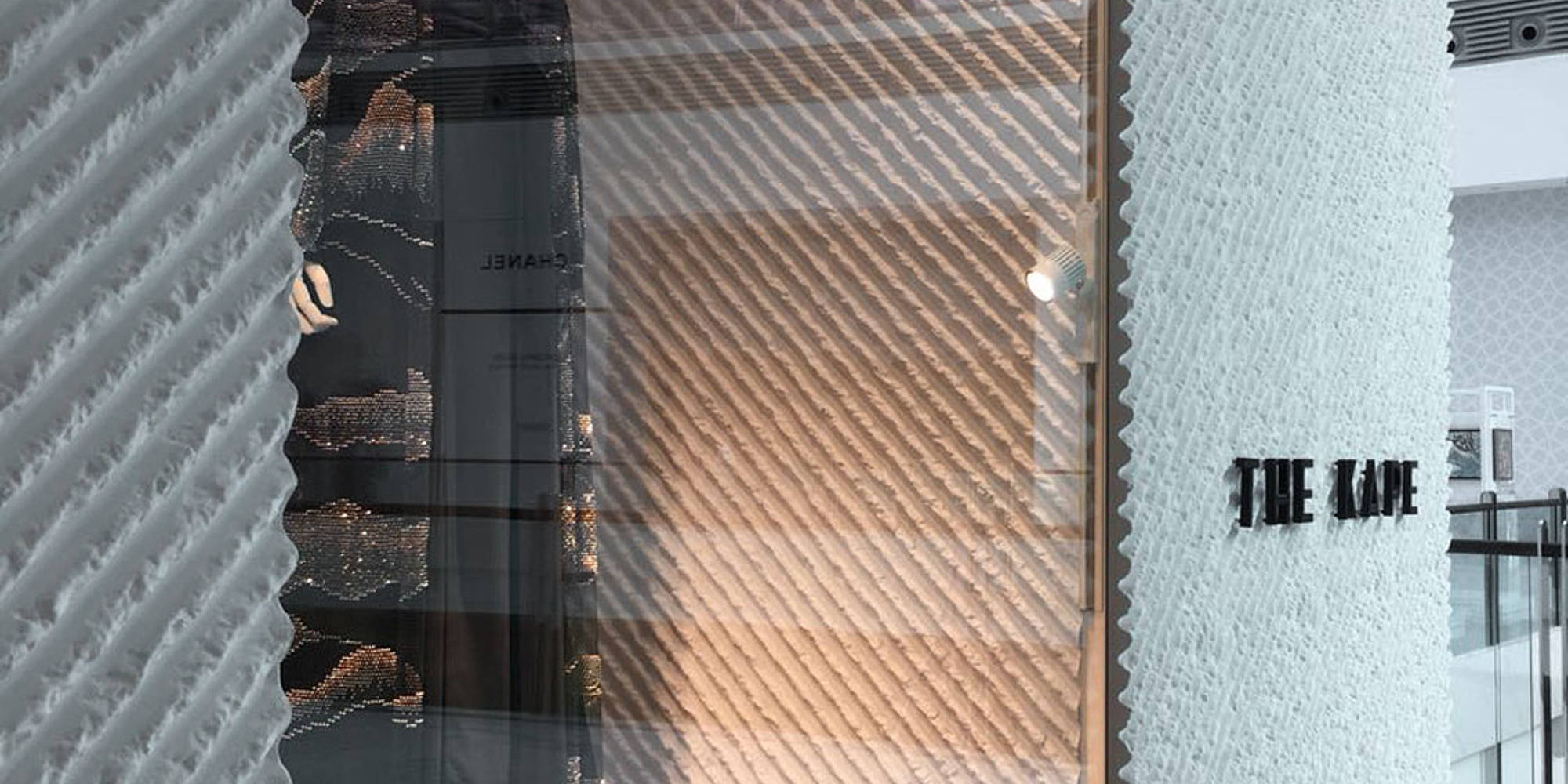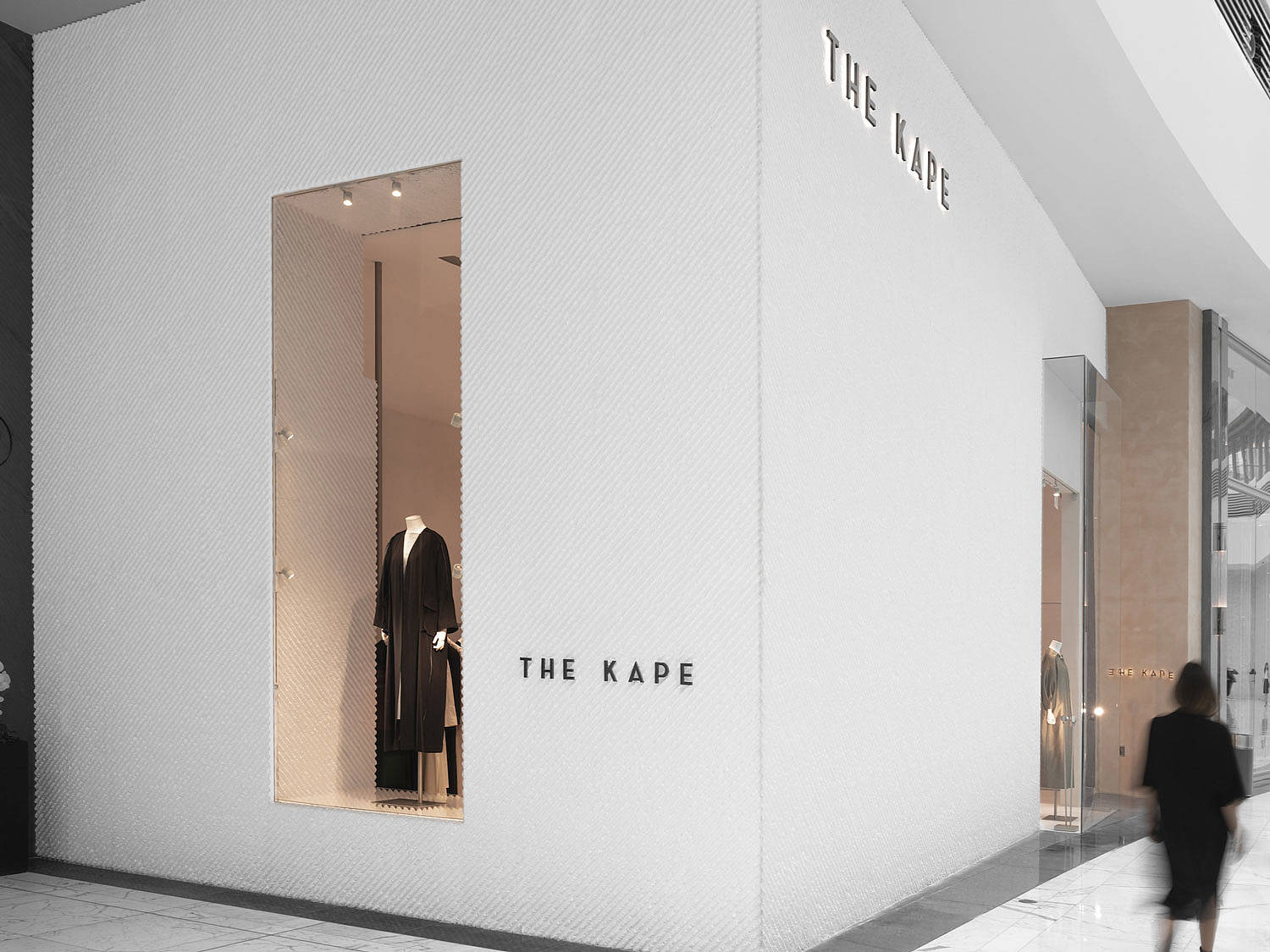The Kape, Dubai, United Arab Emirates
The minimalist design of the women’s boutique The Kape in the United Arab Emirates puts the clothing in the foreground. Nevertheless, subtle and minimalistic, it makes a statement with elements such as a concrete façade.
The Dubai Mall is one of the most exclusive shopping destinations in the United Arab Emirates. In addition to luxury fashion brands such as Gucci and Prada, the young Arab fashion label THE KAPE opened a shop there. The label from Hanadi al Hawi puts the traditional Islamic Abaya garment in the foreground: A floor-length garment that women wear over their normal clothes when they leave their home.
The owner of the brand also wanted to express the modern interpretation of the fashion in the appearance of her store. The Kape commissioned the Italian architecture studio superfuturedesign*, which also runs an office in the United Arab Emirates and has already created several designs for luxurious labels. “This was one of our favorites because it was a recent startup with its first store and office in the Dubai Design District; the SUPERFUTUREDESIGN* concept and philosophy would be embedded in every detail of the boutique, and it would become something that is intertwined with the unconventional fashion garments that are designed and sold by the brand,” said the architects.
The architects place light at the forefront of the 70 square meter boutique. The interior is dominated by shades of gray and earth tones, and a clever lighting concept discreetly stages the colors so that the clothing takes center stage. The white ceiling and a light gray resin floor give the impression of height. Only the fitting rooms have a dramatic color scheme: The carpet and the curtains on the cabins glow with a rich red. An orange patterned chair and the tripartite mirror are setting well-chosen accents yet fulfilling a purpose: The chair is used by shopping companions as they wait, and the mirror is for the customer.



The architects at superfuturedesign* have consistently applied their concept to the exterior as well. They reduced the usual glass façade to a large, protruding window. The boutique can display a single outfit exclusively in the foreground. The rest of the shop front itself also becomes an exhibition space, not for clothing, but for the construction material concrete, which is processed in an exclusive way here. Bright white with a wave-like structure, the concrete surface completes the noble look of the boutique.
“The façade in the boutique was a result of some experimentation with new materials and elements; prefabricated cement panels were delicately transformed using a patented moulding technology,” said the architects. They opted for the RECKLI design Pennsilva, a rib and wave structure with vertically arranged elevations. The waves have a rough structure, which optically provides additional tension. RECKLI supplied 4 elastic structural formliners measuring 1.2 x 1.24 meters and 8 formliners measuring 1 x 1.24 meters. Whitecube Industries’ concrete engineers used the formliners on snow-white ultra high performance concrete: They were placed in the formwork before pouring the concrete and, after hardening, were easily removed from the surface. The formliner transfers its pattern – in this case the Pennsilva structure – to the concrete surface during the drying process.
“It crossed the surface in a diagonal direction and created an amusing effect that would grasp the audience’s attention,” said the architects about the structure. By means of adjustable mirrors and hangers, the exhibition area inside can be flexibly designed to provide a stimulating insight into the fashion.
